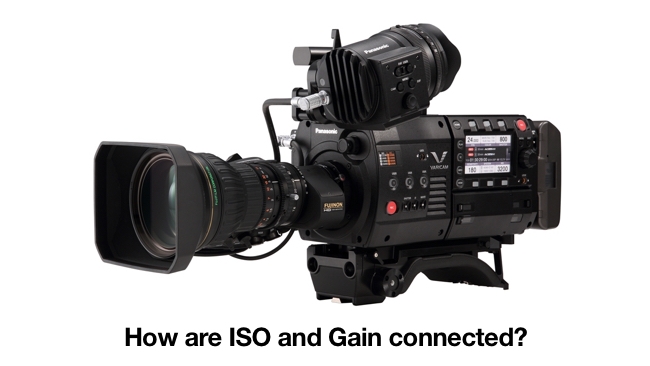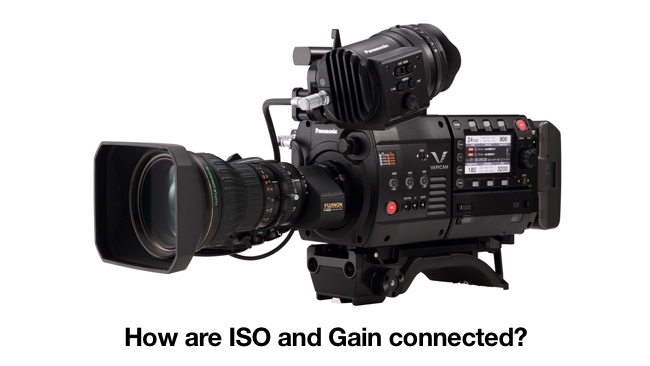
 ISO-less?
ISO-less?
You can make a camera more sensitive by adding gain. But that boosts the noise as well. What exactly do we mean by a camera's ISO rating?
A few years ago the term 'ISO-less' started to emerge as a description of certain sensor technologies, starting with DSLRs. On the face of it, the term is absurd. An ISO rating reflects a level of signal output, relative to the maximum and minimum recordable values, that a digital imaging sensor will output given a certain amount of incident light. All sensors have this characteristic and, without that information, we can't sensibly expose the scene. Nonetheless, the approach that's being seriously proposed is that it may be better, particularly when shooting lightly-compressed or uncompressed material, to overlook ISO settings entirely and make the exposure decision later, in the computer. This idea has emerged principally because of advances in both sensor and recording technology, which can often mean that the differences between performing ISO processing on the sensor data in camera and doing so later are minimised.
ISO/sensor relationship
The basics tenets of the situation are not controversial. The sensitivity of an electronic sensor, defined by the amount of signal output in comparison to the amount of incident light, is set by its design and manufacturing process and cannot be altered electronically. Larger pixels will tend to seem more sensitive, because the larger area collects a larger number of photons, and some manufacturing techniques provide higher sensitivity than others, in exchange for other compromises. Because of this, higher resolution sensors of the same physical size tend to be less sensitive than lower-resolution sensors, or noisier, since more amplification of the signal is required to achieve the same output.
The behaviour of the resulting camera system is determined by the manufacturer's decision as to how much signal output from the sensor should read as, say, 18% grey in the resulting image file. This, in turn, is a matter of opinion: in any given lighting scenario, placing a low level of sensor output at 18% grey will make the sensor seem fast and with comparatively large highlight range, but will make noise more visible. Placing a higher level of sensor output at 18% grey will make the sensor seem quieter, but slower, and with more limited highlight range.
The term 'ISO-less' seems to be primarily applied to the notion of the user making this the decision about sensitivity, about what level of sensor output equates to a particular brightness in the output image, at some point after shooting. If we think about it, this has been common for some time. People in the 1990s were deliberately underexposing standard-definition video cameras, then increasing brightness with gamma changes in postproduction. That's fundamentally the approach used by all low-con acquisition techniques, from Sony's original hypergamma curves to modern log implementations.
A subjective matter?
From a technical perspective, all electronic imagers have always been ISO-less, in at least one sense of the term. There is no fixed point of reference, as there was with densitometry of a film negative. An individual photographer could arrive at an ISO figure for a camera which produced results that photographer considered desirable. Many people might agree on those numbers within a stop or two, but that's the best you're going to get in terms of an unequivocal idea of native sensitivity for a sensor. There is no absolute mathematical relationship at play here. Perhaps we could better say that all electronic imaging sensors have one single fixed ISO which is somewhat in the eye of the beholder.
Or, we could say that they have a range of usable ISOs. Assume the ISO is too high and the tendency will be to underexpose the image to the point of excessive noise. Assume it's too low and the tendency will be to overexpose to the point of clipping highlights. This is fundamentally what's already done with all imaging sensors when we select an ISO and we see these caveats – very low ISO selections on some Canon DSLRs are synthesised in software and can suffer reduced highlight range as a result. In general, though, it's difficult to think of this as 'ISO-less'.
ISO or gain...
One mistake we must avoid is to regard selectable ISO and selectable gain as fundamentally different. Whatever the term 'ISO-less' means to various people, it certainly doesn't alter this reality. The situation is complicated somewhat by the fact that some cameras, such as Sony's FS7, offer separate operating modes in which not only does the exposure control change from being called 'ISO' to being called 'gain', but the gamma setups and colorimetry change enormously as well. This, as well as things like in-camera noise reduction, which are increasingly common, can complicate comparisons and make ISO and gain controls appear to behave very differently. Regardless, more sensitivity – that is, achieving a result where a scene with less light gives us a similar-looking exposure to a scene with more light – requires gain. It's difficult to countenance the term 'ISO-less' just on the basis that we're applying that gain on a workstation, as opposed to in camera. The term might be used to describe that particular workflow, but it's a spectacularly inaccurate and unhelpful way to do so.
The problems that people are trying to avoid by considering sensors to be 'ISO-less' is that the electronics used to do the amplification may not ideally match the photographer's intent. This is a comparable situation to that of using a LUT in on-set monitoring. This may provide an approximate correction of a log recorded image, but it will later be used as a basis for a manually-trimmed grade because it is unlikely to be entirely perfect for any given situation. This is a completely valid concern and one of the reasons that people like to ensure the recording captures as much as possible of the sensor information, but the point, once again, remains: the sensor has a fixed sensitivity, or range of sensitivities, which can be represented in ISO. The fact that the controls happen to be calibrated in units called ISO or dB is nothing more than a convenient piece of user interface design that happens to facilitate other things, such as the use of light meters.
So, ultimately, we have a sensor that has a fixed sensitivity which we may consider to be slightly variable in practice and, in the ideal case, we have a situation where it doesn't matter whether processing to achieve a given ISO occurs in camera or in post. However, it certainly doesn't seem very reasonable to refer to either situation as 'ISO-less'.
Tags: Production


Comments